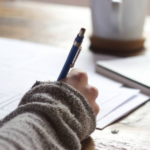Success in exams often depends on how well students can retain and recall information. While studying for long hours is essential, using effective memory techniques can significantly improve retention and recall, making exam preparation more efficient. This guide explores the best memory techniques for exam success, providing students with strategies to enhance their learning and recall abilities.
Understanding Memory and Learning
Before diving into specific techniques, it’s important to understand how memory works.
1. Types of Memory
- Sensory Memory – Retains information for a few seconds before discarding or passing it to short-term memory.
- Short-Term Memory – Holds limited information for a brief time (e.g., memorizing a phone number temporarily).
- Long-Term Memory – Stores vast amounts of information for extended periods and is crucial for exam preparation.
2. The Science of Retention
Research shows that information retention improves when:
- The material is repeated over time.
- Different senses are engaged (visual, auditory, kinesthetic).
- Learning is associated with meaningful connections.
- Techniques like mnemonics and active recall are used.
Best Memory Techniques for Exam Success
1. The Spaced Repetition Method
Spaced repetition involves reviewing information at increasing intervals over time. This technique strengthens long-term memory and prevents forgetting.
How to Use It:
- Review material immediately after learning.
- Review again after 24 hours, then after a week, then a month.
- Use apps like Anki or Quizlet to create flashcards with spaced repetition.
2. The Pomodoro Technique

The Pomodoro technique helps improve concentration and memory retention by breaking study sessions into intervals.
How to Use It:
- Study for 25 minutes with full focus.
- Take a 5-minute break.
- Repeat the cycle four times, then take a longer 15–30-minute break.
3. Mind Mapping for Better Organization
Mind maps help visualize and structure complex information, making it easier to recall.
How to Use It:
- Start with a central topic (e.g., “Photosynthesis”).
- Branch out with related subtopics and key points.
- Use colors and images to reinforce memory.
4. The Memory Palace Technique (Method of Loci)
This ancient technique involves associating information with specific locations in an imagined space.
How to Use It:
- Visualize a familiar place (e.g., your house).
- Assign key facts to different locations in the house.
- Mentally walk through the house to recall the information.
5. Mnemonics and Acronyms
Mnemonics help in memorizing lists and sequences through easy-to-remember phrases or acronyms.
Examples:
- PEMDAS (Parentheses, Exponents, Multiplication, Division, Addition, Subtraction) for math operations.
- HOMES (Huron, Ontario, Michigan, Erie, Superior) for the Great Lakes.
6. Active Recall Method
Active recall forces the brain to retrieve information, strengthening memory.
How to Use It:
- After studying, write down key points from memory.
- Test yourself with flashcards instead of re-reading notes.
- Teach the concept to someone else.
7. The Feynman Technique
This method enhances understanding by simplifying complex topics.
How to Use It:
- Choose a topic and explain it as if teaching a 5-year-old.
- Identify gaps and refine your understanding.
- Repeat until the concept is fully clear.
8. Chunking for Better Retention
Chunking breaks large amounts of information into smaller, manageable sections.
How to Use It:
- Instead of memorizing “177618121945,” break it into “1776, 1812, 1945” (historical years).
- Group related concepts together.
9. Visualization and Association
The brain remembers images better than words. Associating words with visuals strengthens recall.
How to Use It:
- Convert abstract concepts into mental images.
- Associate facts with personal experiences or funny stories.
10. Study with Music or Rhythms
Music and rhythms can enhance memory by creating associations with information.
How to Use It:
- Use instrumental or classical music to focus.
- Turn facts into songs or rhymes.
Additional Tips for Effective Studying
1. Maintain a Healthy Lifestyle

- Get adequate sleep (7-9 hours) to consolidate memory.
- Eat brain-boosting foods like nuts, berries, and fish.
- Exercise regularly to improve focus and cognitive function.
2. Practice Past Papers
Practicing old exams helps with pattern recognition and builds confidence.
3. Use Different Learning Styles
- Visual Learners – Use diagrams and charts.
- Auditory Learners – Record and listen to notes.
- Kinesthetic Learners – Use hands-on activities or walk while studying.
4. Stay Consistent
Regular, daily study sessions are more effective than cramming at the last minute.
5. Manage Stress and Anxiety
- Practice deep breathing and mindfulness.
- Take breaks and avoid burnout.
- Maintain a positive mindset.
Also Read: How Does AI Powered Exam Preparation Improve Study Efficiency?
Conclusion
Memory techniques can transform the way students prepare for exams. Methods like spaced repetition, mnemonics, and active recall enhance retention and recall. By adopting effective strategies, maintaining a healthy lifestyle, and practicing consistently, students can boost their exam performance and achieve academic success.
FAQs
1. How early should I start using memory techniques for exams?
Start as early as possible! Spaced repetition works best when used over weeks or months rather than days before an exam.
2. Which memory technique is best for memorizing long answers?
The Memory Palace technique and chunking help in memorizing lengthy content by breaking it into manageable parts and associating it with familiar places.
3. Can listening to music help with memory retention?
Yes, instrumental or classical music can improve focus, but lyrics may be distracting. Experiment to find what works best for you.
4. How can I avoid forgetting what I study?
Use spaced repetition, active recall, and mind maps to reinforce learning over time. Teaching the material to someone else also strengthens retention.
5. Are digital flashcards effective for memory retention?
Yes! Apps like Anki and Quizlet use spaced repetition, making them great tools for memorization.





